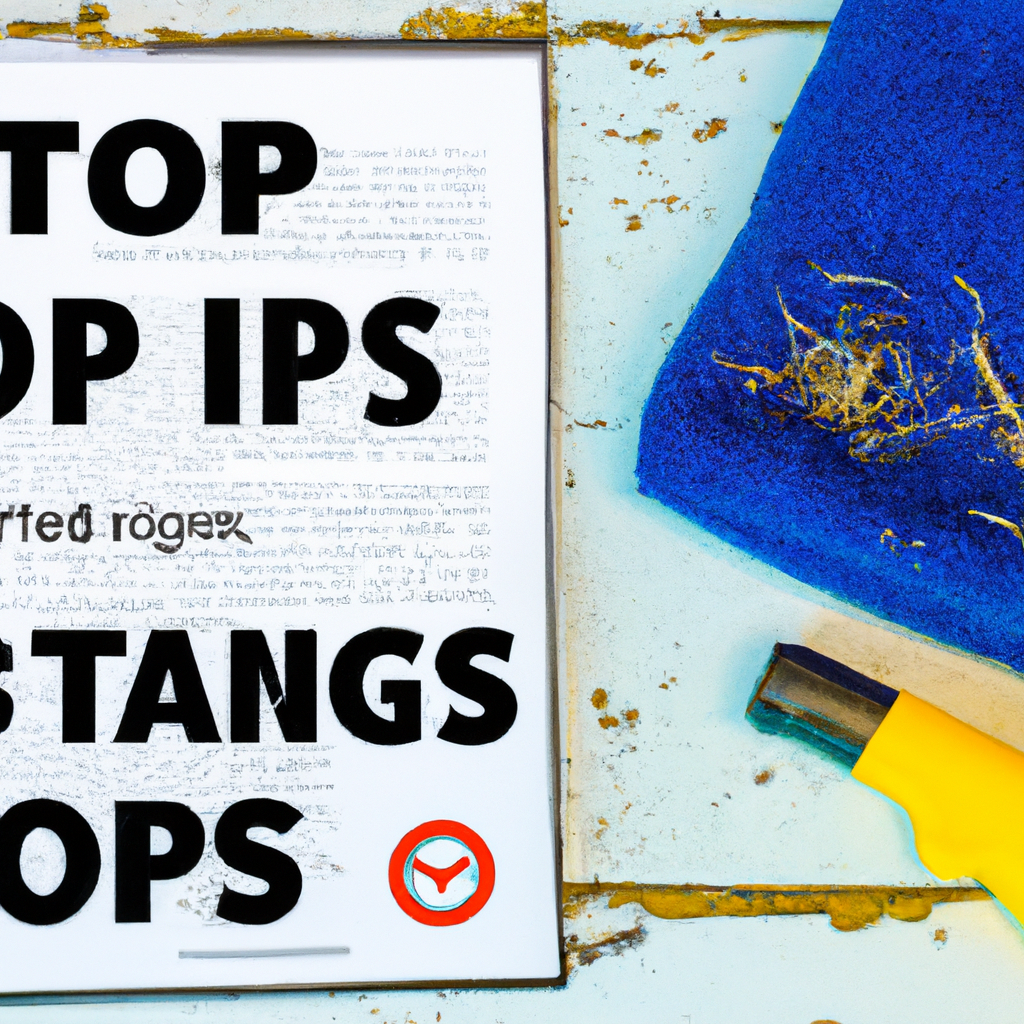Tips for Preventing and Managing Hot Spots in Dogs
Hot spots, those pesky, painful patches on your furry friend's skin, can be a true nightmare. Fear not, for

Every dog owner knows that our furry friends can be prone to the occasional mishap or medical issue. One of these pesky problems that often plagues our four-legged companions is the dreaded hot spot. These irritating, inflamed areas on your dog’s skin can quickly turn a tail-wagging time into a nightmare of itching and discomfort. But fear not, for there are ways to prevent and manage these unruly hot spots! In this article, we will delve into the art of keeping your canine companion cool, comfortable, and hot spot-free. So grab a leash, settle down with your pup, and prepare to discover the secrets to wagging tails and happy trails!
Understanding the Causes and Symptoms of Hot Spots in Dogs
Common Causes of Hot Spots in Dogs
In order to effectively treat and prevent hot spots in dogs, it is crucial to understand the root causes. Hot spots, also known as acute moist dermatitis, are localized areas of skin inflammation and irritation. Here are some common causes that can trigger the development of hot spots:
- Allergies: Dogs may develop hot spots as a result of allergies to certain foods, environmental factors, or even fleas.
- Poor grooming habits: Neglecting to regularly clean and groom your canine companion can lead to the accumulation of dirt, moisture, and bacteria on their skin, providing a breeding ground for hot spots.
- Underlying skin infections: Pre-existing conditions like dermatitis or fungal infections can make dogs more prone to developing hot spots.
- Insect bites or stings: Painful bites or stings from pesky insects can cause dogs to excessively scratch or chew their skin, leading to hot spots.
- Anxiety and stress: Dogs experiencing stress or anxiety may manifest their emotional distress through compulsive scratching, licking, or biting, resulting in hot spots.
Identifying Symptoms of Hot Spots in Dogs
Hot spots in dogs can be uncomfortable and distressing for our furry friends. Prompt identification of the symptoms is essential to provide appropriate care. Look out for the following signs:
- Red, inflamed, and moist skin lesions: Hot spots often appear as circular or oval-shaped patches of irritated skin, accompanied by a discharge of pus or fluid.
- Intense itching and discomfort: Dogs with hot spots will frequently scratch or chew at the affected area, often until the fur is matted or missing.
- Foul odor: Due to the bacterial growth associated with hot spots, a strong and unpleasant smell may be emanating from the affected area.
- Excessive licking or biting: Dogs may exhibit obsessive behavior towards the hot spot, attempting to relieve their discomfort.
- Hair loss and skin redness: Affected areas are commonly devoid of fur and exhibit noticeable redness and inflammation.
Remember, if you suspect your furry companion has a hot spot, it is crucial to consult with a veterinarian for a proper diagnosis and treatment plan tailored to your dog’s specific needs.

Effective Home Remedies for Treating Hot Spots in Dogs
Hot spots in dogs refer to inflamed, itchy, and irritated areas on their skin. These can be quite uncomfortable for your furry friend and can lead to excessive scratching, biting, and even hair loss. If you’re looking for natural and effective home remedies to alleviate your dog’s hot spots, we’ve got you covered! Here are some tried-and-tested methods that can soothe your pup’s skin and promote healing:
1. Apple Cider Vinegar: This miracle ingredient has antimicrobial and antiseptic properties that can help reduce inflammation and prevent infections. Dilute apple cider vinegar with water, gently apply it to the affected area using a clean cloth or cotton ball, and allow it to air dry.
2. Aloe Vera Gel: Known for its cooling and soothing effects, aloe vera gel is great for relieving hot spots. Apply a thin layer of natural, unscented aloe vera gel directly onto the affected area. Keep in mind that ingesting aloe vera can be toxic to dogs, so make sure your pup doesn’t lick the gel.

Expert Tips for Preventing Hot Spots in Dogs
Ensuring your furry friend’s long-term health and happiness is every pet parent’s priority. Hot spots, also known as acute moist dermatitis, can be an uncomfortable and irritating condition for your beloved canine companion. To help you keep those pesky hot spots at bay, we have gathered some expert tips and tricks.
1. Regular grooming: Brushing your dog’s coat regularly not only promotes healthy skin and reduces the chance of matting but also helps in preventing hot spots by removing dead skin cells and distributing natural oils. Use a soft-bristle brush and be sure to pay attention to the areas where hot spots are more likely to develop, such as the neck, hips, and behind the ears.
2. A balanced diet: Providing your pup with a well-balanced diet is crucial for overall health, including skin health. Consult your veterinarian to ensure your furry companion is getting the proper nutrients. Omega-3 fatty acids, found in fish oil supplements or certain types of fish, can also help promote healthy skin and reduce the likelihood of hot spots.

Managing Hot Spots: Professional Veterinary Advice and Treatment Options
Efficient Solutions for Treating Hot Spots on your Pet
When it comes to managing hot spots, it is crucial to seek professional veterinary advice and explore the various treatment options available. These irritating and painful skin inflammations can develop quickly, causing discomfort to your beloved four-legged friend. Our team of experienced veterinarians is here to guide you through this challenging situation and provide you with effective strategies to relieve your pet’s symptoms and prevent further complications.
Professional Veterinary Advice
Our knowledgeable veterinarians understand the importance of accurate diagnosis and can help you pinpoint the underlying causes of your pet’s hot spots. Through a comprehensive examination, they will determine if the condition is triggered by allergies, parasites, or a more complex underlying issue. With their expertise, your veterinary professional will be able to recommend customized treatment plans tailored to your pet’s specific needs.
Treatment Options
- Topical Medications: Depending on the severity of the hot spot, your veterinarian may prescribe medicated creams, ointments, or sprays to reduce inflammation and promote healing.
- Oral Medications: In more severe cases, oral antibiotics or steroids might be necessary to combat infection and control itching.
- Wound Care: Proper wound care is essential for hot spot recovery. Your veterinarian will demonstrate how to clean and dress the affected area to prevent further irritation and promote healing.
- Identifying Triggers: A crucial aspect of managing hot spots is determining and avoiding the triggers. This may involve changing your pet’s diet, preventing exposure to allergens, or regularly treating them for fleas or mites.
Remember, it is always advisable to consult with a professional veterinarian to ensure the best course of action for your pet’s hot spots. By addressing the issue promptly and following their guidance, you can help your furry companion find relief, improved comfort, and a happier, healthier life.
Insights and Conclusions
As we bid farewell to this essential guide on preventing and managing hot spots in our beloved canine companions, let us remember the invaluable lessons learned. The journey through these tips has been a vibrant exploration of how we can protect our furry friends from the prickly perils of hot spots.
With every word written, we have uncovered the hidden secrets to keeping our four-legged companions happy, healthy, and itch-free. From the simple act of regular grooming to the profound understanding of our dogs’ behaviors, we have delved into the depths of knowledge, emerging with a newfound sense of empowerment.
As we embrace the conclusion of this enlightening article, it becomes clear that preventing and managing hot spots is much more than just a responsibility—it is a labor of love. The delicate balance between sensitivity and vigilance, between compassion and care, forms the foundation upon which our fur-filled relationships thrive.
Let us embark on this journey together, armed with the arsenal of knowledge and a steadfast determination to safeguard our pets’ well-being. With each passing day, let us remember to dote on our furry friends, ensuring they remain cool in the blistering heat and protected from the menacing clutches of hot spots.
So, dear dog parents and enthusiasts alike, as you close this chapter and step back into the boundless world of canine companionship, take heart in knowing that you hold within your hands the key to a future devoid of those pesky hot spots. It is a future where your loyal companions can frolic with joy, their skin unmarred by the fiery itch of a hot spot.
As you continue your quest to becoming an expert in the art of hot spot prevention and management, share your newfound wisdom with others in need. Spread the word far and wide, for knowledge shared is indeed knowledge multiplied.
In parting, may these tips serve as a gentle reminder that our dogs rely on us to be their calm amidst the storm of hot spots. Let us embark on this journey with a sense of purpose, compassion, and joy, for the rewards that await us are immeasurable.
Farewell, dear reader, and here’s to a future of happy, healthy, and hot spot-free adventures with our beloved canine companions.






